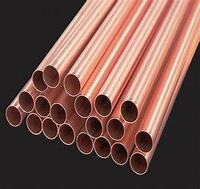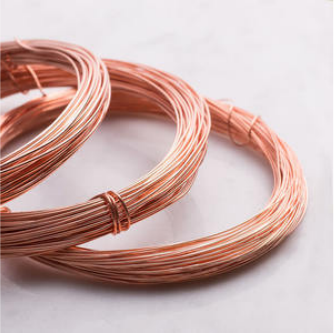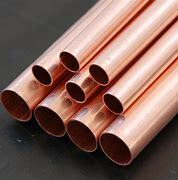1. Introduction
Just 24 hours ago, global copper prices surged past $10,000 per metric ton amid supply chain hiccups in Chile and renewed demand from green energy projects. If you’ve ever wondered why your electrician insists on copper rods or why your aircon technician carries rolls of copper tubing like sacred scrolls—you’re not alone. Copper isn’t just shiny; it’s the unsung hero of modern infrastructure, and today, we’re giving it the spotlight it deserves.

Whether you’re grounding a skyscraper, brazing a joint, or stripping wire for scrap, understanding copper rod and its many cousins—like copper strip, copper pipe, and copper bar—is essential. So grab your safety goggles (and maybe a cup of coffee), because we’re about to unravel the electrifying truth about copper in all its forms.
2. What Is a Copper Rod, Anyway?
At its core, a copper rod is exactly what it sounds like: a solid cylindrical bar made of pure or alloyed copper. But don’t let its simplicity fool you. This humble metal rod powers everything from lightning protection systems to high-precision welding jobs.
Copper rods come in various grades and purities. Electrolytic Tough Pitch (ETP) copper is the most common, boasting over 99.9% purity—perfect for electrical conductivity. Meanwhile, oxygen-free copper rods are used where extreme reliability is non-negotiable (think aerospace or medical devices).
3. Types and Uses of Copper Rod
3.1 Earthing and Grounding Applications
When it comes to safety, few things beat a good copper earth rod. Also known as an earthing rod copper or ground rod copper, this version is specifically designed to channel lightning or fault currents safely into the earth. But not all rods are created equal.
- Copper bonded earthing rod: A steel core coated with a thick layer of copper for strength and corrosion resistance.
- Copper clad ground rod: Similar to bonded, but often with a thinner copper layer.
- Solid copper rod: The premium (and pricey) choice for high-corrosion environments.
Pro tip: If you’re comparing earthing rod price tags, remember that copper bonded steel offers the best bang for your buck in most soil types.
3.2 Welding and Brazing Rods

Need to join copper to copper? Enter the copper brazing rod and copper welding rod. These specialized rods melt at lower temperatures than base copper, allowing for clean, strong joints without warping your workpiece.
Copper to copper brazing rods are ideal for HVAC and plumbing, while copper to copper welding rod variants (often phosphorus-deoxidized) ensure leak-proof seals in refrigeration lines. And yes, ‘welding rod copper’ is a real thing—though technically, it’s usually brazing, not welding, due to copper’s high thermal conductivity.
4. Copper Rod vs. Copper Strip vs. Copper Bar
Confused about copper rod, copper strip, and copper bar? You’re not alone. Let’s break it down:
Copper rod (round bar copper) is cylindrical and used for grounding, machining, or as feedstock. Copper round bar is just another name for the same thing—marketing loves synonyms.
Copper strip (or copperstrip, if you’re feeling minimalist) is flat and flexible. Think copper strip for earthing in switchgear, copper roof strip for architectural flair, or thin copper strips in electronics. Need 1mm copper strip or beryllium copper strip for springs? It’s out there.
Copper bar—especially copper bus bar or flexible copper bus bar—handles high-current applications in power distribution. Cu bars come in flat, rectangular, or custom shapes, and yes, you can buy copper bars for sale online (just search ‘copper bar top’ if you’re into metallurgy puns).
And if you’re stripping wire for scrap, skip the ‘burning copper wire for scrap’ nonsense—it’s illegal in many places and terrible for your lungs. Instead, use a wire stripper or mechanical cutter for the best way to strip copper wire safely and profitably.
5. Copper in Plumbing and HVAC: Pipes, Tubes, and Fittings

Let’s talk about the unsung plumbing MVP: copper pipework. From 15mm copper pipe to 22mm copper tube, these gleaming lines carry everything from drinking water to refrigerant in your aircon.
Air conditioning copper pipe (or aircon copper tube) is specially dehydrated and sealed to prevent moisture contamination. Sizes like 3/4 copper tubing or 1/2 copper pipe are standard, and proper copper pipe soldering is an art form involving flux, heat, and just the right amount of panic.
Don’t forget copper pipe fittings—elbows, tees, and couplings that make your system leak-free. And while PEX plumbing pipes are gaining ground, copper remains the gold standard for durability and heat resistance.
6. Pricing and Practical Tips
Copper rod price fluctuates daily with the LME (London Metal Exchange). As of this week, expect to pay $8–12 per kg depending on form and purity. Similarly, copper strip price and copper ingot price track global trends—so timing matters if you’re buying in bulk.
Looking for ‘copper strip near me’? Check electrical wholesalers or metal suppliers. Need a roll of copper strip? Many come in 10–50m coils. And if you’re eyeing a copper earth strip 25x3mm price, prepare for ~$20–30 per meter depending on region and coating.
For DIYers: the fast way to strip copper wire is with an automatic wire stripper—not your teeth (yes, people have tried). And no, stripping cable for copper isn’t worth it if you’re only salvaging a few feet—focus on volume and safety.
7. Conclusion
From copper rod for welding to copper clad steel earth rod for grounding, copper’s versatility is unmatched. Whether you’re an electrician, plumber, recycler, or just a curious homeowner, understanding these copper forms helps you work smarter, safer, and more efficiently. So next time you see a glint of reddish metal, tip your hat—it’s probably saving lives, powering cities, or keeping your aircon frosty. And that’s nothing to copper about.
Our Website founded on October 17, 2012, is a high-tech enterprise committed to the research and development, production, processing, sales and technical services of ceramic relative materials such as Master. Our products includes but not limited to Boron Carbide Ceramic Products, Boron Nitride Ceramic Products, Silicon Carbide Ceramic Products, Silicon Nitride Ceramic Products, Zirconium Dioxide Ceramic Products, etc. If you are interested, please feel free to contact us.

